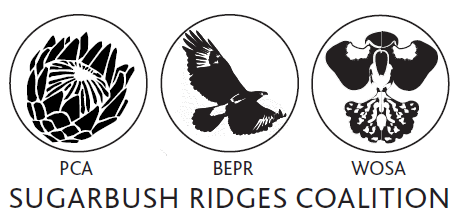Satyrium
The flowers of Satyrium are distinctly recognisable in that the they are non-resupinate and the hood shaped lip has two distinct spurs. 41 of the 91 species are found in South Africa. It is a predominantly African genus with only three species found in Asia. Terrestrial plant with most species bearing a terminal inflorescence. Some species bear a sterile shoot next to the flowering stem. The replacement tuber develops at the base of the sterile shoot. It is this tuber that will bear the flowering stem in the next growing season while again producing a sterile shoot beside it. Other species simply develop one to numerous replacement tubers next to the flowering stem on stolons or closely connected to the tuber with the flowering stem. It is for this reason that many of the Satyriums are not easy to cultivate over an extended period of time. The risk of loosing the replacement tubers to rotting is high and if it is lost the plant cannot perpetuate itself ultimately succumbs.
Credit
Johnson, S.D., Bytebier, B., Stärker, H. (2010). Orchids of South Africa: A field guide. Struik Nature, Cape Town, South Africa.
There are no articles in this category. If subcategories display on this page, they may have articles.
For more information regarding the preservation of South Africa's wild Orchids or if you would like to get involved please email This email address is being protected from spambots. You need JavaScript enabled to view it. or complete this short form Contact Us and we will contact you.

